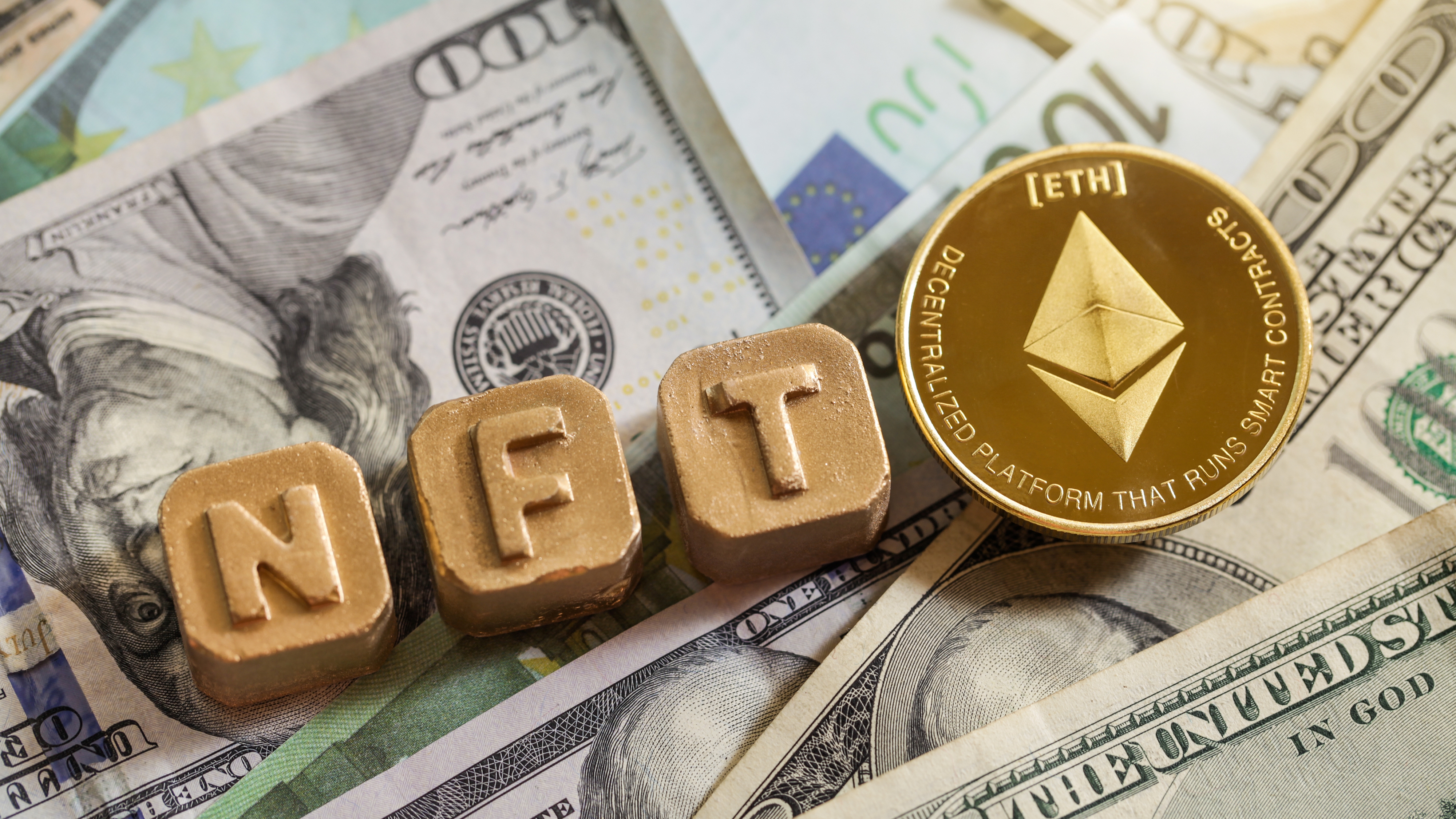This is massively significant. To put it into perspective, physical fiat currency is the complete opposite. A pound is always a pound, a dollar is a dollar, so on so forth.
Each NFT comes with its own identification code and metadata that allows it to be uniquely identified from all other NFTs and, therefore, enables its ownership to be readily tracked and traced.
Each NFT cannot be replicated, only traded, and can be pretty much anything – so long as it can be digitized. Digital drawings, doodles, pieces of music, memes, or Tweets, for example, can all become NFTs. They can also be, of course, unique digital artworks. The main criteria are that they are entirely unique.
“Tokenizing” these intangible assets allows them to be bought, sold, and traded more efficiently while in theory reducing the probability of fraud. The reality is somewhat different, as we will see.
NFTs can be created using blockchain and a specialist NFT marketplace to encode and tokenize the digital asset. The marketplace mints the NFT, charging a fee for the service. There are also other associated fees involved. When NFTs are sold, for example, this process also attracts a fee, or fees, depending on the system used.
These fees are usually paid for using a cryptocurrency. For this reason, wannabe NFT creators and owners will also need their own crypto wallets. When an NFT is purchased, the original artist/creator maintains ownership of the intellectual rights to the work, while the new owner will buy ownership of the NFT, not the original work that it is based on.

However, when someone buys an NFT, they are not buying a physical object. If the original digital work was freely available to view on the Internet, for example, a Tweet, it will usually remain freely available – the NFT owner has simply purchased the right to say that they own the work.
All of this is tracked on the NFT blockchain.
You can compare the process to prints of works of art in the real world. The artist would keep the original painting, and each “print” has its own unique number and perhaps a certificate of authenticity that accompanies the print every time it exchanges hands.
One of the major benefits of NFTs is for artists and creators. Unlike the physical world, where artists sell their works through intermediaries like galleries and art brokers, who take a cut of the profits, NFTs are based on a blockchain the transaction process can be made without the need for any intermediaries. Not involving art galleries, solicitors, and brokers makes the process far more time and cost-efficient for the artists.
Also unlike real works of art or assets, NFTs can actually be combined together to “breed” a new third unique NFT. This is called extensible, and would obviously be impossible with real physical works of art. Imagine, if you can, combining Da Vinci’s Mona Lisa with Edvard Munch’s The Scream to make a new, admittedly probably quite odd painting.
For artists, NFTs are proving to be something of a revolution and open up many new opportunities for them to monetize their talent – especially for new artists trying to make a name for themselves.
For budding musicians, this could also be revolutionary. Not too dissimilar to the impact of social media, NFTs could open up the possibility for musicians to fund their activities, new records, etc, through selling NFTs rather than relying on agents or donations. Merchandise and yet unknown collectibles could be put on offer for musicians fans to reward their favorite artists and fund their activities. It could possibly even be used to mint music festival tickets that were free from the risk of scalping.
By far the most popular form of NFTs at present are so-called collectibles. Things like digital sports cards, rarities, even short clips of sports games, are all changing hands for millions of dollars. Even simple text, like Jack Dorsey’s first-ever tweet, has been tokenized and recently sold for an astonishing $2.9 million.
NFTs, or rather the blockchain system that underpins it, could even potentially be used to verify life experiences like being at a particularly important sports game, music gig, landmark, etc. Rather than simply claiming it to be true, you could actually prove it. Although what this will do to the concept of trust is anyone’s guess.
Credit: Source link



 Bitcoin
Bitcoin  Ethereum
Ethereum  Tether
Tether  XRP
XRP  Solana
Solana  USDC
USDC  TRON
TRON  Lido Staked Ether
Lido Staked Ether  Dogecoin
Dogecoin  Figure Heloc
Figure Heloc  Cardano
Cardano  Bitcoin Cash
Bitcoin Cash  Wrapped stETH
Wrapped stETH  WhiteBIT Coin
WhiteBIT Coin  Wrapped Bitcoin
Wrapped Bitcoin  Wrapped eETH
Wrapped eETH  USDS
USDS  Chainlink
Chainlink  Binance Bridged USDT (BNB Smart Chain)
Binance Bridged USDT (BNB Smart Chain)  LEO Token
LEO Token  WETH
WETH  Monero
Monero  Zcash
Zcash  Stellar
Stellar  Coinbase Wrapped BTC
Coinbase Wrapped BTC  Sui
Sui  Hyperliquid
Hyperliquid  Ethena USDe
Ethena USDe  Litecoin
Litecoin  Avalanche
Avalanche  Hedera
Hedera  Shiba Inu
Shiba Inu  Canton
Canton  sUSDS
sUSDS  World Liberty Financial
World Liberty Financial  USDT0
USDT0  Toncoin
Toncoin  Dai
Dai  Cronos
Cronos  PayPal USD
PayPal USD  Uniswap
Uniswap  Ethena Staked USDe
Ethena Staked USDe  Polkadot
Polkadot  USD1
USD1  Mantle
Mantle  Rain
Rain  MemeCore
MemeCore  Pepe
Pepe